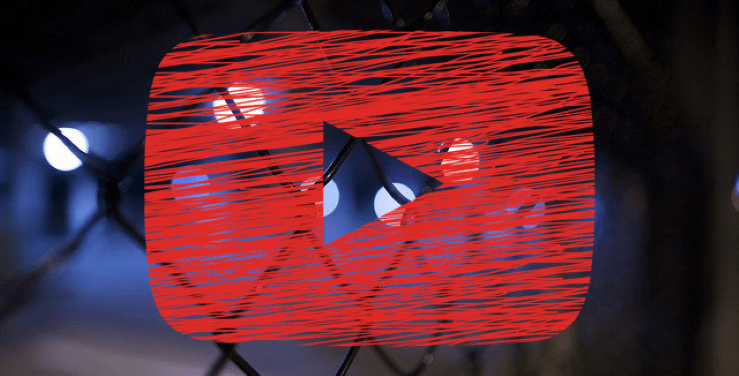Simple Link Building Techniques
Best link building strategies
Link building remains a cornerstone of effective search engine optimization (SEO) strategies. However, in an ever-evolving digital landscape, it’s imperative to implement tactics that not only build links but also contribute to long-term SEO success. In this comprehensive guide, we’ll explore the best link building strategies that can propel your website to the top of search engine results pages (SERPs) and establish authority in your niche.
I. Create High-Quality, Shareable Content
1. In-Depth Guides and Resources:
– Craft comprehensive, informative content that serves as a valuable resource for your audience. This encourages organic linking from other websites.
2. Infographics and Visual Content:
– Visual assets like infographics can attract more shares and backlinks, especially when they convey complex information in an easily digestible format.
II. Guest Blogging and Contributorship
1. Target Reputable Publications:
– Identify authoritative websites and industry publications that accept guest contributions. Contribute valuable content to these platforms with a backlink to your site.
2. Establish Relationships:
– Build relationships with editors, fellow contributors, and influencers in your industry. Networking can lead to more guest blogging opportunities and collaborations.
III. Broken Link Building
1. Identify Relevant Broken Links:
– Find broken links on reputable websites within your niche. Tools like Check My Links and Ahrefs can assist in this process.
2. Offer a Relevant Replacement:
– Reach out to the website owner or editor, and suggest your content as a suitable replacement for the broken link. Ensure your content adds value to their page.
IV. Skyscraper Technique
1. Identify Link-Worthy Content:
– Find high-performing content in your niche that has garnered numerous backlinks. Tools like BuzzSumo can help with this research.
2. Create Even Better Content:
– Develop a piece of content that surpasses the quality, depth, and value of the original. Promote it to the websites linking to the original content.
V. Collaborate with Influencers and Thought Leaders
1. Expert Roundups:
– Conduct expert roundups or interviews with influencers in your industry. When published, these influencers are likely to share the content, generating backlinks.
2. Co-Create Content:
– Collaborate on content projects, such as ebooks, webinars, or podcasts, with influencers. These collaborations can result in valuable backlinks from their audience.
Effective link building is a dynamic process that requires a combination of strategies tailored to your specific industry and audience. By creating high-quality content, leveraging guest blogging opportunities, capitalizing on broken link building, implementing the skyscraper technique, and collaborating with influencers, you can establish a robust link profile that not only boosts your SEO but also establishes your authority in your niche. Remember, patience and persistence are key; the rewards of a well-executed link building campaign often manifest over time.
Which links move the needle?
Introduction
In the dynamic realm of digital marketing, not all links are created equal. Some have the power to significantly impact a website’s visibility, traffic, and authority, while others may have minimal influence. Understanding which links “move the needle” is crucial for a successful SEO strategy. In this comprehensive guide, we will delve into the types of links that truly matter and how they contribute to your website’s online presence.
I. High-Quality Backlinks: The Backbone of SEO
1. Authoritative Domains:
– Links from websites with high domain authority are highly valuable. They signal to search engines that your content is trusted and relevant.
2. Relevance:
– Backlinks from websites in the same industry or niche are considered more valuable. They provide context and relevance to your content.
3. Editorial and Natural Links:
– Links that are naturally included in content by publishers are more impactful than those obtained through manipulative tactics.
II. Guest Posts and Contributed Content
1. Strategic Guest Blogging:
– Contributing high-quality, informative content to reputable websites in your industry not only builds backlinks but also establishes your authority and expertise.
2. Author Bios and In-Content Links:
– Within guest posts, links in the author bio and content itself can lead to increased visibility and traffic for your website.
III. Social Signals and Brand Mentions
1. Social Media Engagement:
– While not direct backlinks, social signals such as shares, likes, and comments can indirectly influence search rankings.
2. Brand Mentions:
– Being mentioned or cited on reputable websites, even without a clickable link, contributes to your brand’s authority and credibility.
IV. Internal Links: Strengthening Site Architecture
1. Relevance and Anchor Text:
– Internal links with relevant anchor text help search engines understand the content and context of pages within your site.
2. User Experience and Navigation:
– Well-structured internal linking improves user experience by guiding visitors to related content and providing clear navigation paths.
V. Local Citations and Niche Directories
1. Local SEO Citations:
– Listings in local directories and platforms like Google My Business are crucial for businesses targeting local audiences.
2. Niche-Specific Directories:
– Being listed in industry-specific directories can boost your authority within your niche and improve visibility among relevant audiences.
In the ever-evolving landscape of SEO, understanding the impact of different types of links is paramount. High-quality backlinks, guest posts, social signals, internal links, and local citations all play a pivotal role in improving your website’s visibility and authority. By strategically acquiring and utilizing these links, you can effectively move the needle and position your website for success in the competitive online marketplace. Remember, it’s not just about the quantity of links, but the quality and relevance that truly make a difference.
Google: We Don’t Use Links On YouTube For Search
Google did not use traditional external links (backlinks) as a primary ranking factor for videos on YouTube within its search algorithms. However, YouTube employs a variety of other factors to rank and recommend videos to users on its platform. Here are some key points to consider:
1. Engagement Metrics: YouTube places a strong emphasis on user engagement metrics, such as watch time, likes, dislikes, comments, and shares. Videos that generate high user engagement are more likely to be recommended and rank well.
2. Relevance: Video content should be relevant to user queries and interests. Titles, descriptions, and tags play a significant role in conveying the content’s relevance to both YouTube and Google search algorithms.
3. User Behavior: User behavior on YouTube, including click-through rates (CTR) from search results and related videos, can influence ranking. High CTR and user interaction signal to YouTube that a video is relevant and engaging.
4. Video Metadata: Properly optimizing video metadata (titles, descriptions, tags) with relevant keywords and descriptions can improve discoverability in search results.
5. Closed Captions and Transcripts: Providing accurate closed captions and transcripts for videos can enhance accessibility and improve search visibility, as they provide additional textual content for search engines to index.
6. Channel Authority: YouTube considers the overall authority of a channel when ranking its videos. Channels with a history of high-quality content and engaged audiences may receive a ranking boost.
7. Content Quality: The quality of the video content itself, including production value, informative content, and viewer retention, can impact how well it ranks and is recommended.
It’s important to note that while external backlinks are not a primary factor in YouTube’s ranking algorithm, they can indirectly influence video visibility. For example, sharing video links on social media or other websites can drive traffic and user engagement, which can positively affect a video’s performance and ranking.
Keep in mind that Google’s search and YouTube’s internal search algorithms may evolve over time. Therefore, it’s a good practice to stay updated with the latest information and best practices for optimizing videos on YouTube for search visibility and user engagement.
Mastering SEO Link Building: 8+ Simple Tips for Success
In the dynamic world of Search Engine Optimization (SEO), link building remains a fundamental strategy to boost your website’s authority and rankings. While it may seem intricate, mastering SEO link building can be achieved through a combination of simple yet effective techniques. This guide presents a collection of straightforward tips to help you navigate the art of link building and enhance your website’s online presence.
1. High-Quality Content Creation: The Foundation of Link Building
Creating valuable and informative content naturally attracts backlinks from authoritative sources. Focus on producing content that addresses your audience’s needs and offers unique insights.
2. Guest Posting: Forge Partnerships and Build Links
Contribute guest posts to reputable websites within your niche. By sharing your expertise, you not only gain exposure but also earn valuable backlinks to your website.
3. Manual Outreach: Build Relationships and Earn Backlinks
Reach out to other website owners, bloggers, and influencers in your industry. Building genuine relationships can lead to backlink opportunities through collaboration.
4. Broken Link Building: Turn Errors into Opportunities
Identify broken links on relevant websites and offer your content as a replacement. This method provides value to website owners while earning you valuable backlinks.
5. Skyscraper Technique: Elevate Your Content
Identify popular content in your niche, create something even more valuable, and then reach out to websites that are linked to the original content, offering them your improved version.
6. Resource Link Building: Position Yourself as a Resource
Create comprehensive guides, infographics, or tools that are useful to your target audience. Other websites may naturally link to these resources, establishing your website as a valuable reference.
7. Internal Linking: Harness the Power Within
Utilize internal links to connect related content within your website. This enhances user experience and helps search engines understand your content’s structure.
8. Social Media Promotion: Amplify Your Content
Promote your content on social media platforms to increase its visibility. When your content gains traction, it’s more likely to be shared and linked by others.
9. Earning Backlinks through Relationships: Networking Pays Off
Building relationships with industry peers, bloggers, and influencers can lead to natural backlink opportunities as they recognize your expertise.
10. Directory Submissions: Choose Reputable Directories
Submit your website to high-quality, relevant directories. Be selective and opt for directories that are trusted and reputable within your niche.
Mastering SEO link building doesn’t have to be daunting. By implementing these simple yet effective techniques, you can enhance your website’s authority, visibility, and search engine rankings. Remember, the key is to focus on creating valuable content, fostering relationships, and strategically promoting your website to earn high-quality backlinks that will contribute to your online success.







